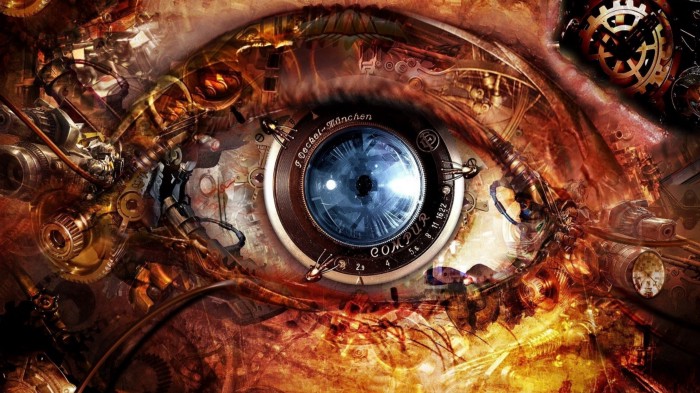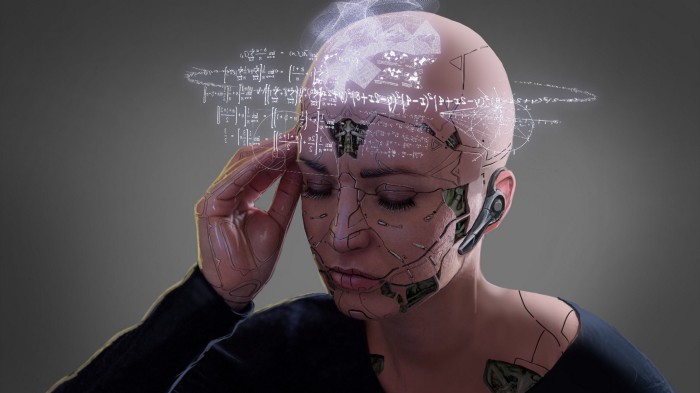Do we want to have superpowers and master extraordinary capabilities?
Do we want our lives to be enhanced with empowering technology that profoundly increases our happiness and quality of life?
Over the last decades, we have evidenced how computers can be built to excel far beyond human nature. By seeing their magnificent performance, we naturally tend to imagine having something of the same for ourselves as well.
Neurotechnology is emerging as the next inevitable step in our evolution.

It is any technology that helps visualize the brain in various aspects of consciousness to better understand the brain function with an aim to improve or repair it. Recent innovations in neuroscience are enabling the accurate recording, monitoring, decoding and modulating of the neural correlates of mental processes. This progress creates a reliable pathway for more granular understanding and alteration of human behavior.
The ability to interact directly with the human brain is one of the most intriguing and also controversial endeavours of our time.
Over the last years, many companies have been founded to advance and accelerate the neurotechnology landscape.
5 visible companies that care
Brain to computer data transmission, speed and accuracy seems to be the last challenge. The good news is that companies like Neuralink are already making notable progress towards developing ultra-high bandwidth brain-machine interfaces to connect humans and computers (Musk 2019). Moreover, the Neuralink brain chip could be ready for a human patient within a year and could first help with brain injuries. The chip would be implanted directly into the skull to interface directly with parts of the human brain.
Many of us would also prefer less invasive ways to read and understand our brain activity.
For that reason, Los Angeles based bio science startup Kernel has recently raised $53 million to develop its non-invasive ‘Neuroscience as a Service’ (NaaS) technology. An ambitious long-term goal is to ultimately develop a much deeper understanding in the field of neuroscience for a new era of wellness and human improvement. The company wants to further scale “on-demand” access to its technology for recording brain activity using two separate products: Flux and Flow. The former detects magnetic fields created by the collective activity of neurons in the brain, while the latter measures blood through the brain.

For those who are willing to learn new skills or improve certain performances, Halo Neuroscience is offering technology that helps in forming new pathways in your brain in order to learn anything of your liking. In science, it is called neuroplasticity — the ability to create and strengthen connections between neurons in the brain. Essentially, Halo Neuroscience technology uses electricity to help your brain learn movement faster. It has been scientifically validated in the contexts of cycling (Huang et al. 2019) and running (Park et al. 2019).
Another interesting and experienced neurotechnology company is Bitbrain. It provides hardware, software, and services for the betterment of human life. It combines neuroscience, artificial intelligence, and hardware to develop innovative products. High-tech EEG brain sensing devices and software solutions for real-world human behaviour research, health and neurotechnology development. They help research, tech and health professionals to leverage neuroscience in a practical and reliable way.
Finally, if you would like neurotechnology tools that interpret human intent, measure emotion, and provide telekinetic control of the digital world, then Neurable is your choice. Imagine, every time one of the 100 billion neurons in your brain activates, it generates an electrical signal that can be detected by EEG (electroencephalography) sensors. To learn more about your brain activity, Neurable uses wearable dry-EEG devices not requiring invasive procedures for implanting anything in the brain. Instead, their devices are ready for use in a few minutes and provide high-quality representation of what your brain is doing.
Mobile apps and wearables on the rise
Neurotechnology related mobile apps for meditation and mindfulness have been rapidly penetrating the marketplace. Currently, Calm and Headspace are two of the very visible mobile apps that have received large amounts of funding and increasingly positive acceptance from their users. Other players are also arriving to the game by offering different experiences for particular audiences.
For example, Insight Timer seems to be appreciated for its simplicity and ease of use. Aura additionally includes emotional health and sleep. Bright Mind enables you to tailor your meditation experience using customized instructions and engaging coaches. Simple Habit and Buddhify are aimed at attracting people with busy routines and meditation on the go. And the list can go on with 10% Happier App, Waking Up, and similar.

Another popular way for adding beneficial technology to human life is through the development of neuro-feedback wearables, which commonly rely on using EEG, infrared light, breathing sensors, and other kinds of relevant innovations.
For example, Muse-S offers a wide variety of meditation neurofeedback features, plus it also uses EEG to enhance the meditation experience for falling asleep easier. Dreem 2 is designed to couple enhanced nighttime tracking with bone conduction audio technology. Such an approach provides better understanding of your sleep patterns and cycles. Soon, they also plan to offer an audio stimulation for increased sleep depth and quality.
FocusEDU is an education wearable that provides real-time feedback on student engagement to teachers, so that it can be used to enhance education outcomes. Foci follows and analyzes your breathing patterns to understand your cognitive brain states throughout the day, thus helping you to monitor changes and maintain desired levels of concentration. Potential X is using EEG sensors and neurofeedback to help people achieve anticipated flow states for increased performance.
Interestingly, Blueberry uses infrared light (instead of magnets) to measure the oxygenation levels in blood. Their advanced glasses measure brain activity in the prefrontal cortex to help you adapt your ongoing performance of tasks by giving advice for when to slow down and when to do an intellectual heavy lifting.
Tremendous future potential
Besides the ability to read, understand, and provide feedback about essential physiological and mental states, it is also intriguing to move on with the neurotechnology that actually does the stimulation for your brain and body. Wearables that are actively impacting your mental states and also your overall relaxation.
Sensate by Bioself Technology is a world-first consumer vagus nerve stimulation product that provides a profound relaxation in as few as 10 minutes for mind and body, without requiring years of training. The Sensate device and app is designed by a leader in integrated medicine to empower you to manage stress, improve sleep and concentration, as well as achieve many of the other beneficial results, including improved heart rate variability and the sense of subjective wellbeing.

Next is Zendo that uses transcranial direct stimulation to enhance the effects of meditation and provides a flow state that feels like arriving right during your session. And another one is Foc.us, the world’s first consumer stimulator which, almost a decade ago, started a revolution that continues today.
Flow is a headband that aims to address your depression without medications or visits to practitioners. Their solution provides targeted electrical neurostimulation to the brain areas related to depression. Thync Relax Pro uses light electrical signals through the back of your neck to help relieve stress naturally. It is a neck-mounted device that aims to help you gradually calm down by lowering heart rate and addressing brain areas related to physiological stress.
Neuroscience or neuro sci-fi?
Impressively, Nextmind claims to be the first brain-sensing wearable for real-time device control. They suggest transforming the human-technology interaction in a way that keyboards or any other input devices will become redundant, as you would be guiding computer interaction using only your thoughts.
Meanwhile, the Human Brain Project (Salles et al. 2019) has been granted €150 million from the European Commission to build a research infrastructure involving robots, artificial intelligence, supercomputers, big data analytics and simulation that could help advance neuroscience, brain-related medicine and computing.

Fiction or not, neurotechnology is increasingly arriving into our lives and the time has come to welcome it with caution and care, as many new things usually require some probation time. Nevertheless, we certainly know that any helpful technology is a great amplifier to help us achieve greater states of individual wellbeing and societal flourishing.
Citations
Musk, E. (2019). An integrated brain-machine interface platform with thousands of channels. Journal of medical Internet research, 21(10), e16194.
Huang, L., Deng, Y., Zheng, X., & Liu, Y. (2019). Transcranial direct current stimulation with halo sport enhances repeated sprint cycling and cognitive performance. Frontiers in physiology, 10, 118.
Park, S. B., Sung, D. J., Kim, B., Kim, S., & Han, J. K. (2019). Transcranial direct current stimulation of motor cortex enhances running performance. PloS one, 14(2), e0211902.
Salles, A., Bjaalie, J. G., Evers, K., Farisco, M., Fothergill, B. T., Guerrero, M., … & Walter, H. (2019). The human brain project: responsible brain research for the benefit of society. Neuron, 101(3), 380–384.




